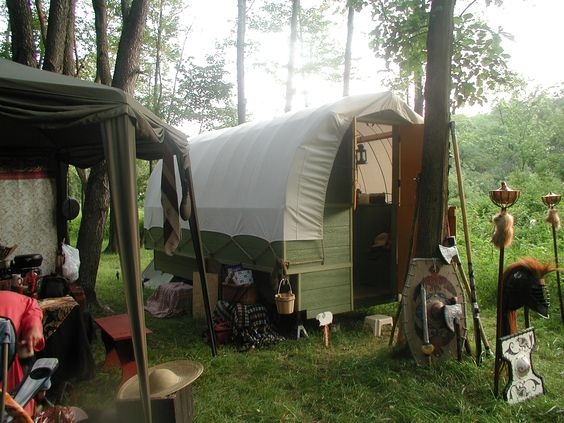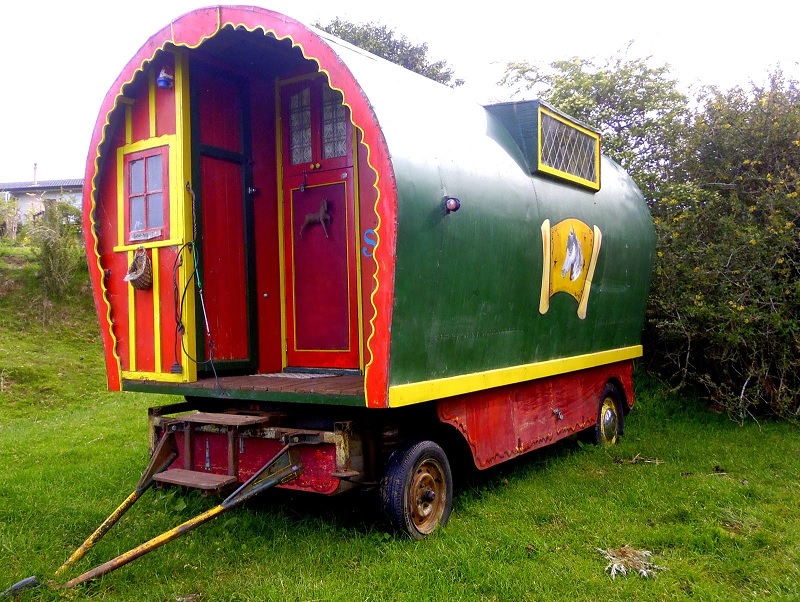Last time we started looking at some of the types of Vardos that are being used as living quarters. And I mentioned that this Vardo was the first one that I ever saw at an SCA event.
When I first posted this picture I was immediately contacted by folks who knew the owner of this marvelous gypsy wagon. And fortunately for all of us that are really interested in such things, she has websites! The wagon in the picture is actually her second gypsy wagon. But to understand it, you really need to watch the building of her first one. So here is her original gypsy wagon website. I was trying to think if I remembered the original wagon. My husband says yes, and the dates are certainly appropriate for me to have seen it. And here is her second website, which follows the construction of the second wagon at the location of a professional “caravan” maker in Canada. I was familiar with the term from watching British television. They call all sorts of small RVs “caravans”. I should warn you about the caravan maker’s site. I found myself just wandering around in it and dreaming of owning my own caravan and designing in all sorts of cool things. Having spent quite a bit of time in and around RV’s I have a certain affection for the beasts.
There are obviously many different ways of making Vardos. The professional caravan site gives several ideas and shows a bunch of the types that she has made. But the canvas covered ones that I see most commonly in Arizona are made with a very different system. They use a light weight bow top, like the Conestoga wagons, to create a Vardo with a low center of gravity and an overall lighter design. This allows the Vardo to be pulled by smaller vehicles.
This Vardo belongs to some Midrealm friends. If you are interested in how they built this Vardo, they have a Pinterest Page that documents the process. Plans for this general type of Vardo are available through the American Vardo Site. A friend who made one of these assures me that the book that they sell is very good. They also have plans, and for impatient people, an e-book.
I love this picture of the three Vardos that magically appeared down the street from us this year. I love the differences in design and decoration. The use of bright colors on two of the wagons is very reminiscent of the painted designs that were used on traditional gypsy wagons in Europe.
Even the location of the door on the Vardos varies. The traditional gypsy wagons from Europe, that I have seen pictures of, all have the door at the back. That way they do not have to be unhitched in order for people to go in and out easily. But the Vardo on the far right in this picture actually uses the tongue of the wagon to provide a location for a landing outside of the door. The addition of a sturdy set of wooden steps completes the entrance way.
Next Time: Alternative Uses for Vardos and Wagons





